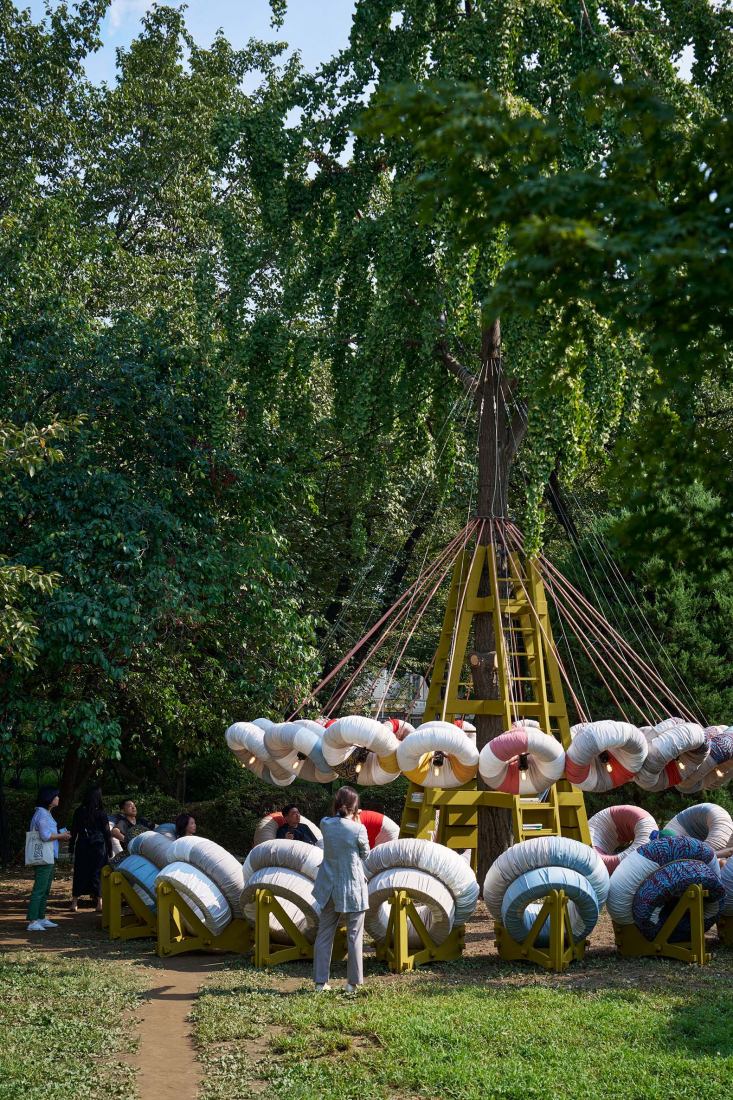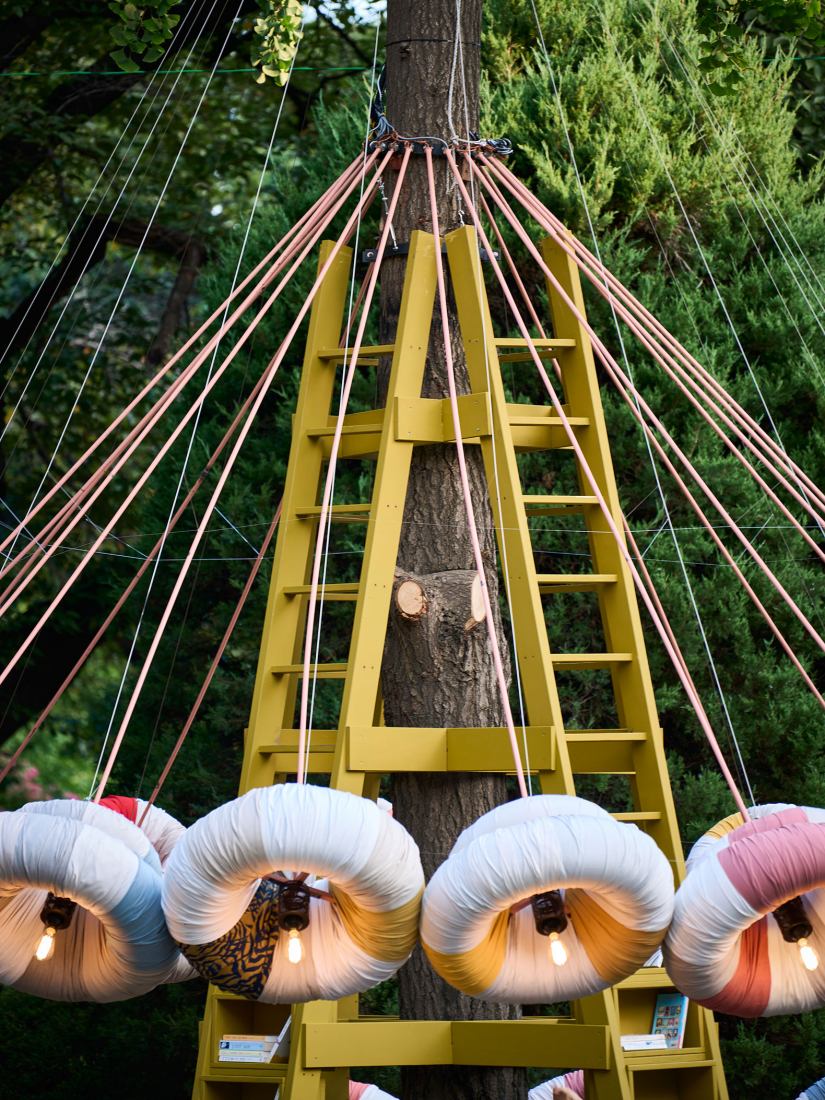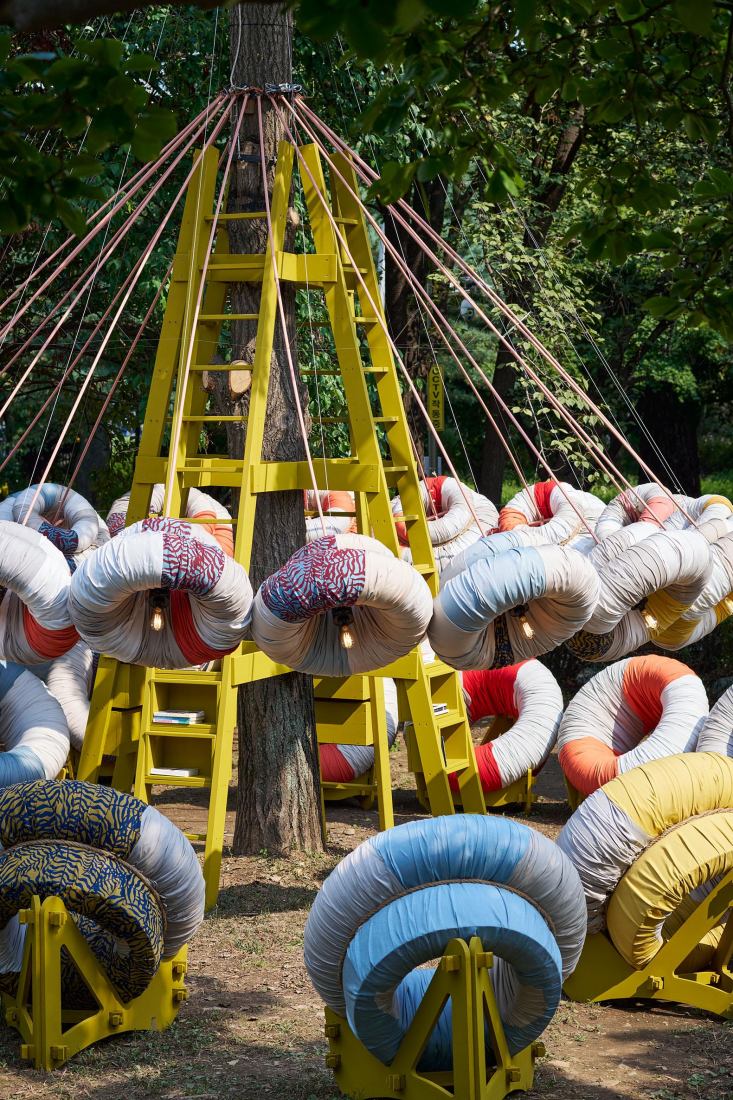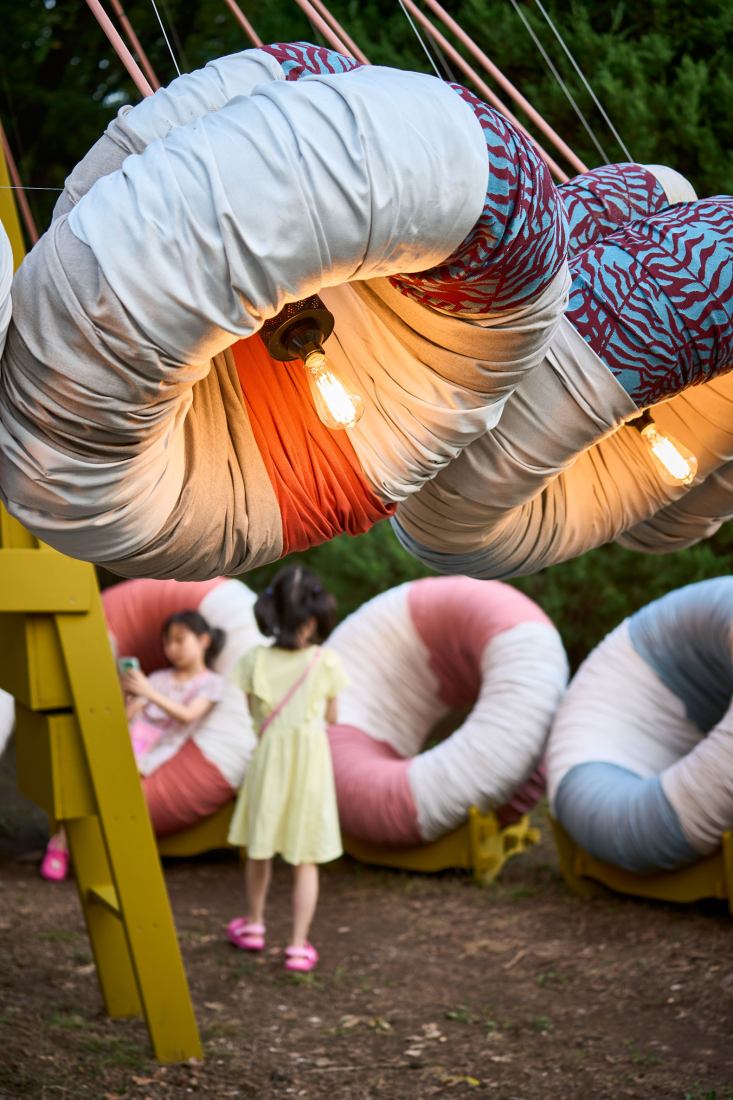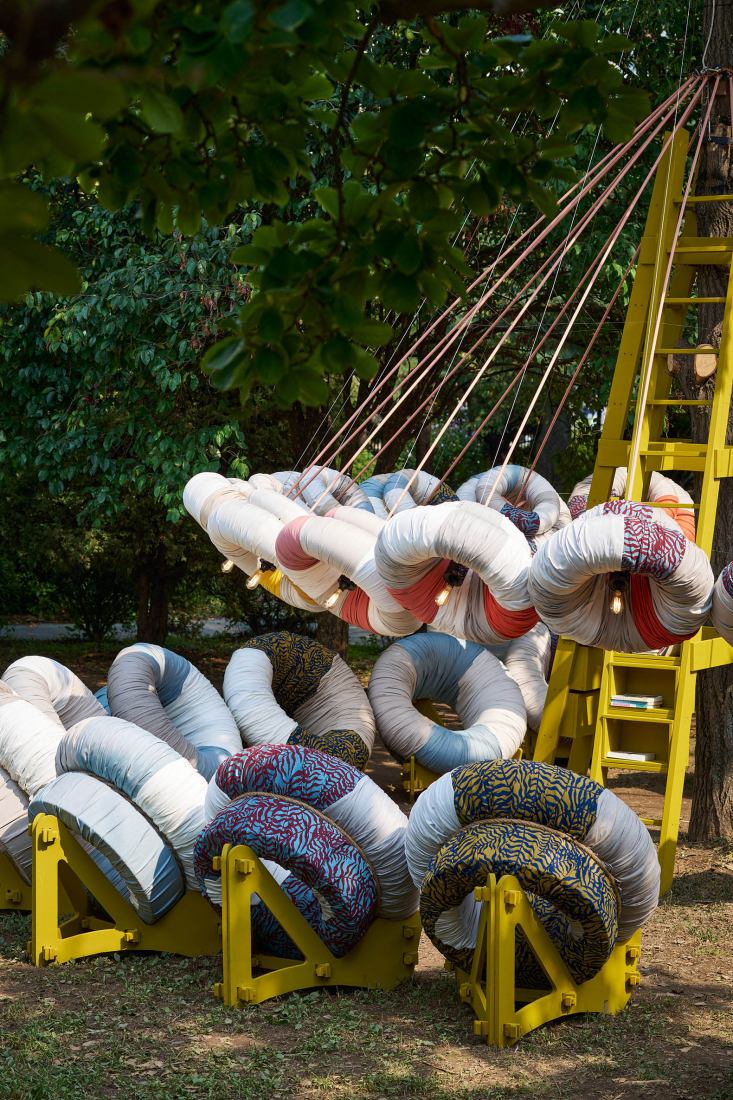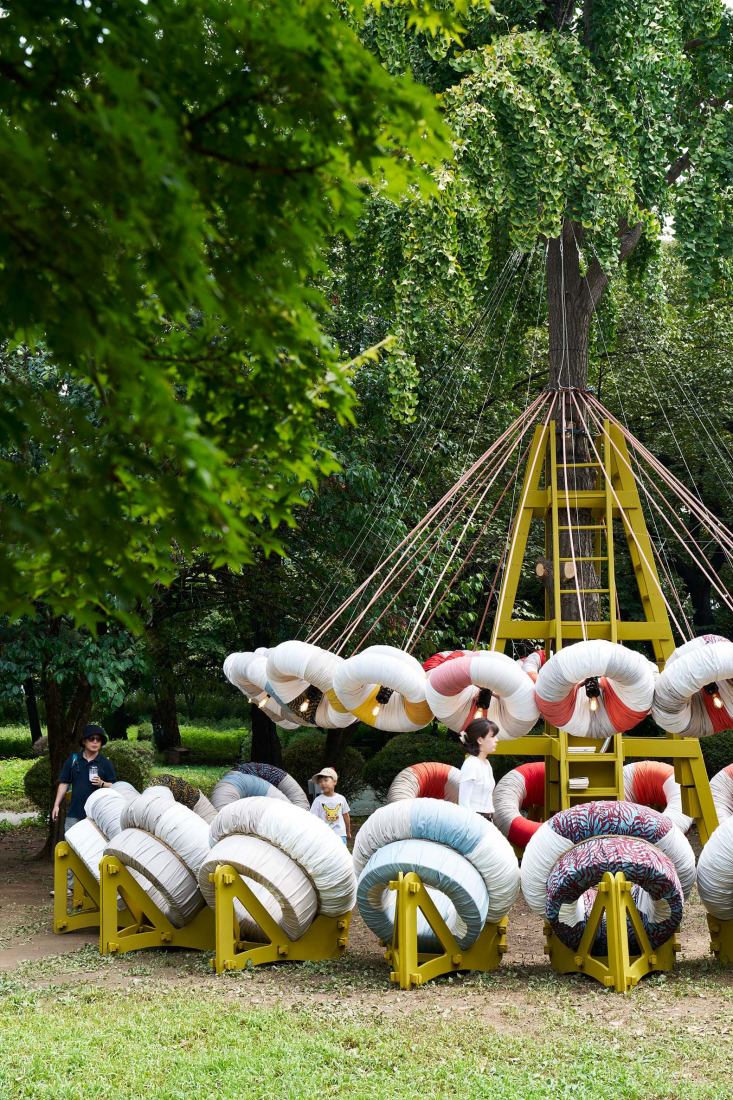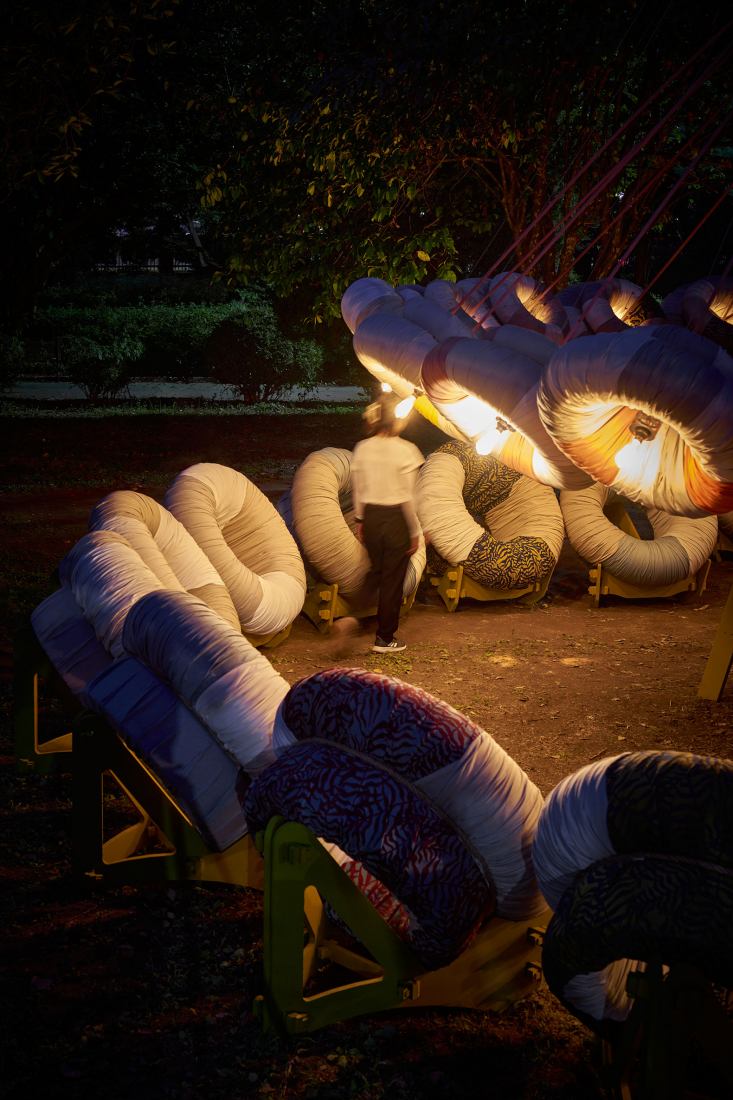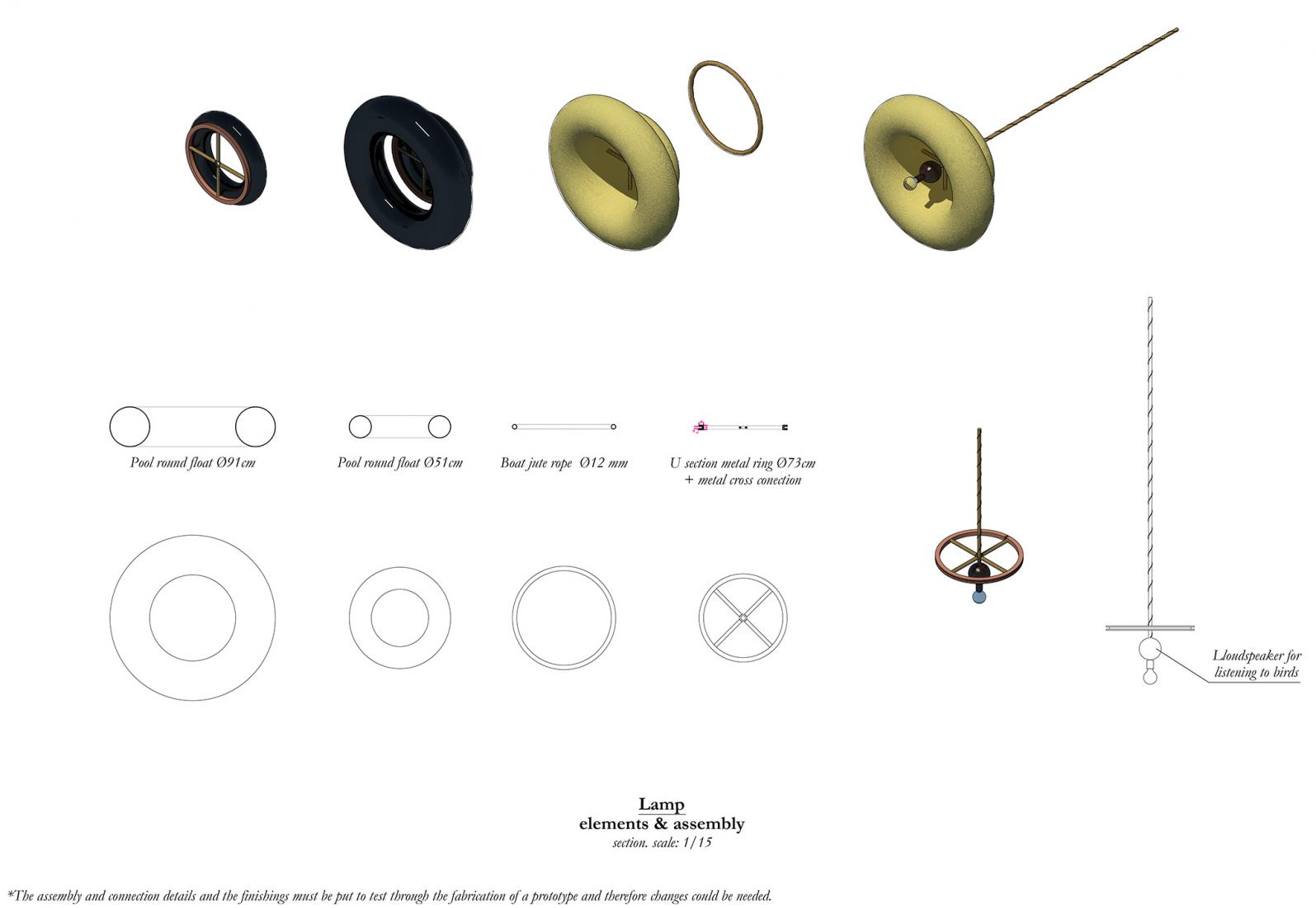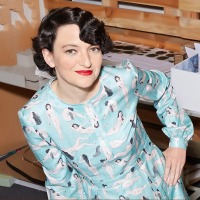Visitors will have seats where they can relax while listening to the sound of birds or reading the books on the shelves of the central structure.
The Madrid-based architect will follow the traditions of Bojagi and Norigae for the textile design of her project. Bojagi, a fabric used to wrap or cover objects, food or gifts, can be found whole or sewn in patches. Norigae are traditional Korean tassels that hang from traditional clothing, but are also used for more elegant gift wrapping.
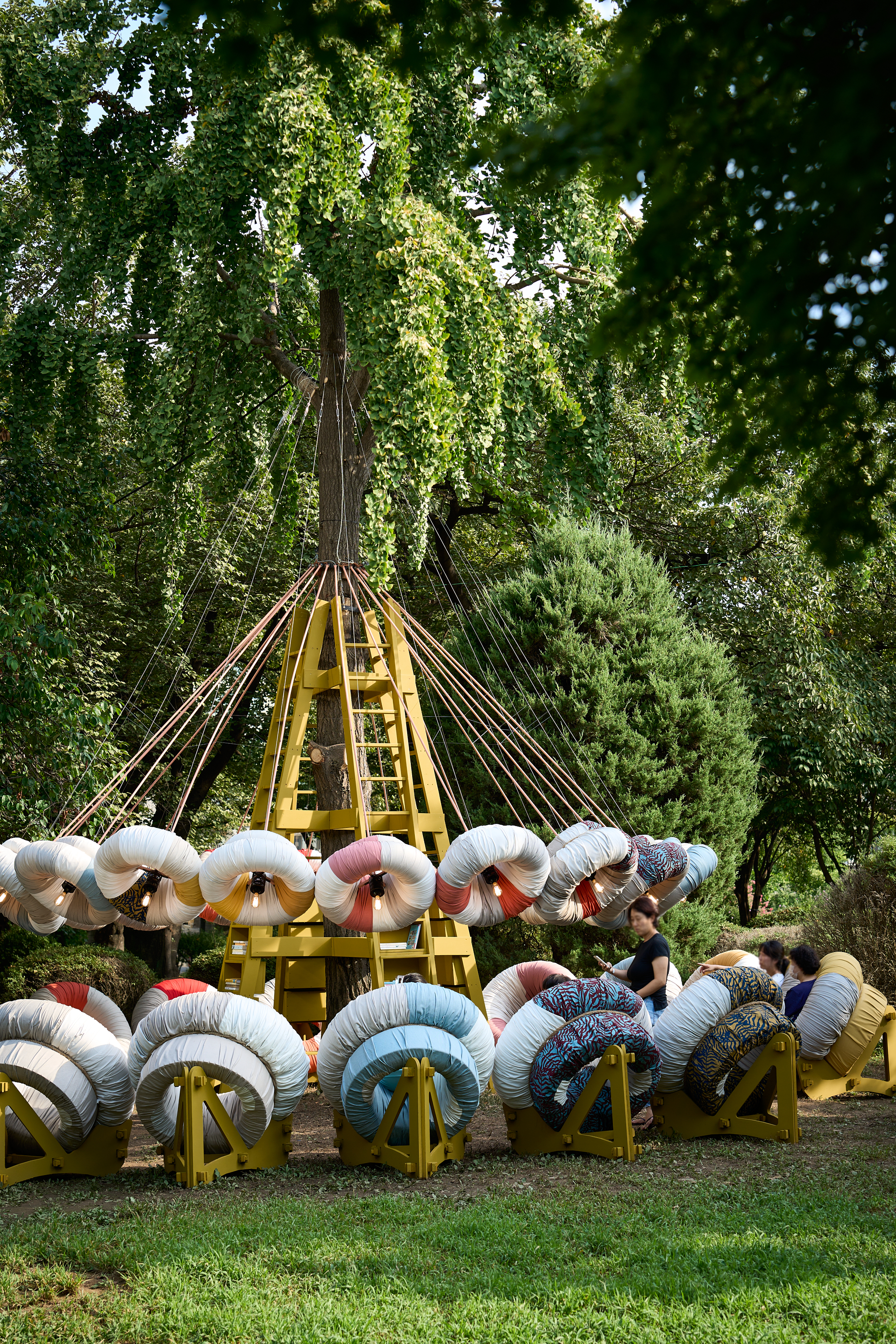
BOJAGI LOUNGE by Izaskun Chinchilla Architects. Photograph by DongWoong Lee.
Description of project by Izaskun Chinchilla
An outdoor pavilion for ‘ZONE 7; Your Imaginary Space’, an Anyang Public Art Project (APAP), reflecting on how circular economy is part of traditional culture, especially female intangible heritage, while celebrates nature and biodiversity
Anyang is a city in Gyeonggi Province, South Korea, with a population of approximately 600,000. It is a satellite city of Seoul located around 21 km south. The City motto of Anyang is "Livable city, Proud citizens".
Anyang Public Art Project (APAP) is a public art event that encourages its participants to reimagine the way they understand and perceive the city. It is a project to transform the city itself into a gallery in which people can enjoy art in their daily life by introducing and presenting context and environment of the changing modern city, such as history, culture, landform, and development of Anyang with various forms of public artworks, such as art, sculpture, architecture, design, and performance. It is co-existing with the people of the city in their daily life.

BOJAGI LOUNGE by Izaskun Chinchilla Architects. Photograph by DongWoong Lee.
APAP explores and deals with nonlinear imaginary spaces around cities, which are modern human settlements and centers of political, social and economic activities.
For its 7th edition, the event explores and presents what "imaginary space and new public art in the city" is. It presents Anyang as a new imaginary space "ZONE 7," not six spaces (ZONE 1-6) under the city's 2030 future city development plan.
Bojagi is the Korean traditional cloth that is used for covering, wrapping, and carrying any items like household goods, food, and gifts. It can be made of one big fabric or small pieces of fabric stitched together just like the patchwork.
Norigae is the Korean traditional knot tassel, an accessory, for women to be hung on hanbok top (jeogori), Korean traditional clothing. This can also be used to make your gift wrapping so much more elegant. With bojagi and norigae, Compare with paper wrapping Bojagi has also the great advantage reusable.
In our proposition we want to present the time we spend in nature as a gift. We are offering an space to read and to listen to birds signing in the entrance garden. The elements allowing you this actions will be wrapped in an outdoor textile donated from the brand sunbrella (guarantee for 20 years outdoor resistance) following some of the Bojagi and Norigae traditions.

BOJAGI LOUNGE by Izaskun Chinchilla Architects. Photograph by DongWoong Lee.
We have designed two main element: a lamp and speaker and a sofa. Both one sofa and one lamp and speaker consists of 2 inflatable donut and a square made out of textile. The square is wrapped around the donut creating a unit. Speaker-lamps units will be hanging from and structure built around trees whereas sofas will rest in the ground with the support of a plywood CNC cut piece. We will form two big rings: one over the ground composed of sofas and one hanging from the structure surrounding a tree.
The result will be two circles in which you can sit, relax and listen to birds singing (reproduced in an audio) or read a selected book (available in the central piece). Although the top ring seems to be holding from the tree truck it is in fact hanging from an auxiliar structure built around the tree. That structure is composed of 4 ladders joined at the top. The ladders have little shelves, cut in plywood with CNC to support the books. Natural plant planting around the rings could increase the charm and beauty of the installation and are considered and important part of the action.
Ideally we would like to build 3 rings, but due to budget restrictions we have come with a modular proposition that can allow to build one, two of three rings and can allow to make them bigger and smaller.

BOJAGI LOUNGE by Izaskun Chinchilla Architects. Photograph by DongWoong Lee.
Aims & objectives.-
-Analyze and celebrate the contemporary values of craftsmanship and the role of women in Korean society showing how they have evolved from 14th century; gaining in social, environmental, economic, political, cultural, identity and innovative relevance.
-Understand how female culture was historically linked with circular economy, systematically applied to domestic economy.
-Research on how innovation, digital fabrication or new materials can empower makers to produce customized products from industrial leftovers that engage with bigger social groups, consumed through alternative networks.
-Design and produce an attractive physical installation in a natural environment surrounded by several interventions engaging with the research findings and introducing tailored craft products.
-Track and evaluate the production of the installation increasing its academic relevance and helping produce a paper or formal academic article and a descriptive book chapter or brochure.
-Share the research hypothesis and the making of the exhibition by social media to increase the impact of the work and to gather reactions.
Questions we try to address.-
-How can circular economy be understood and applied to architecture in a way that is both linked with innovation and vernacular wisdom?
-How female traditional craftsmanship address circular economy in a more effective way that general crafting production?
-How does waste-less production affect the building process in terms of materials, practices and gender equity?
-How the promotion of diverse aesthetics can promote the use of materials that industry has discarded?








